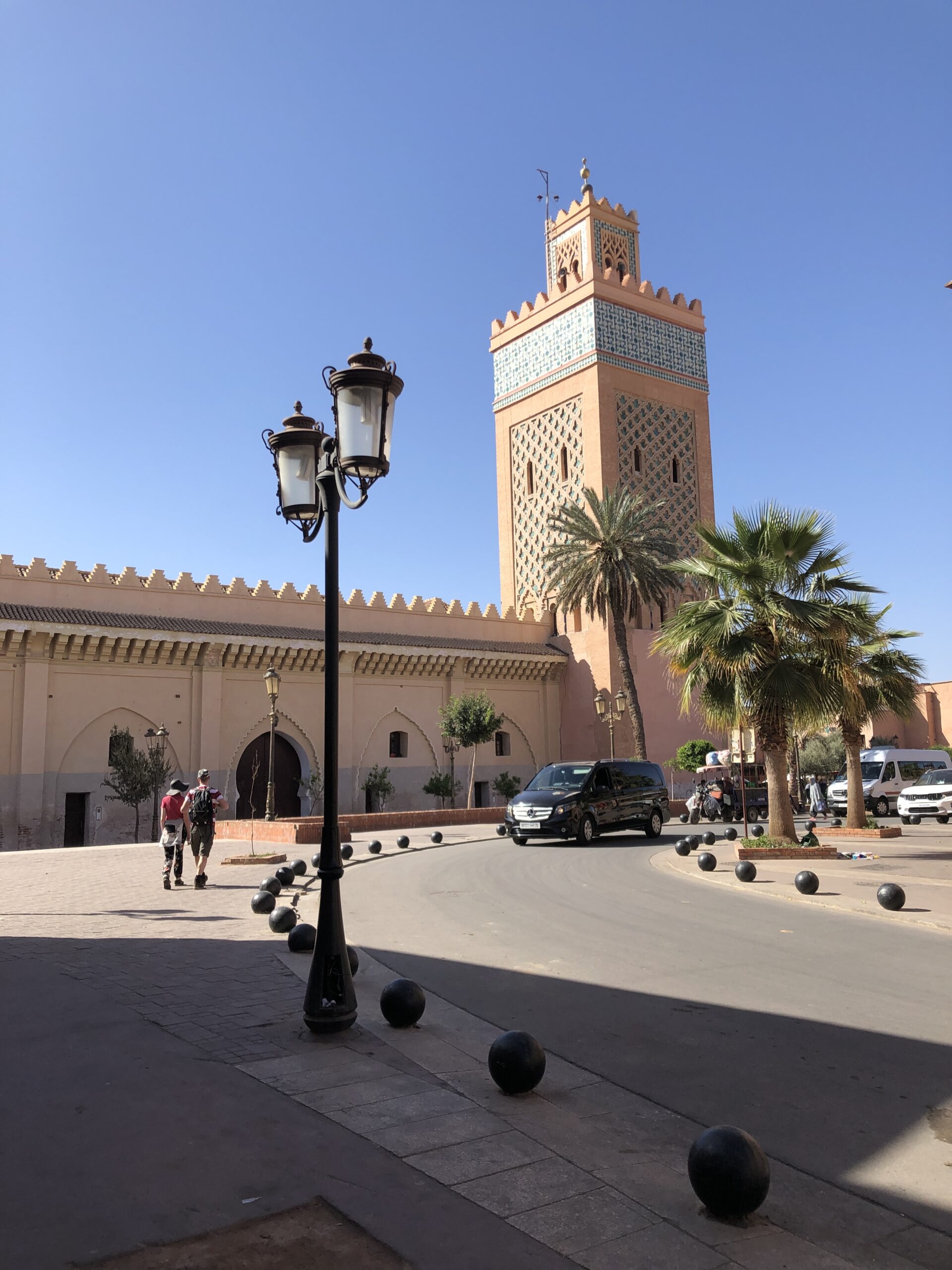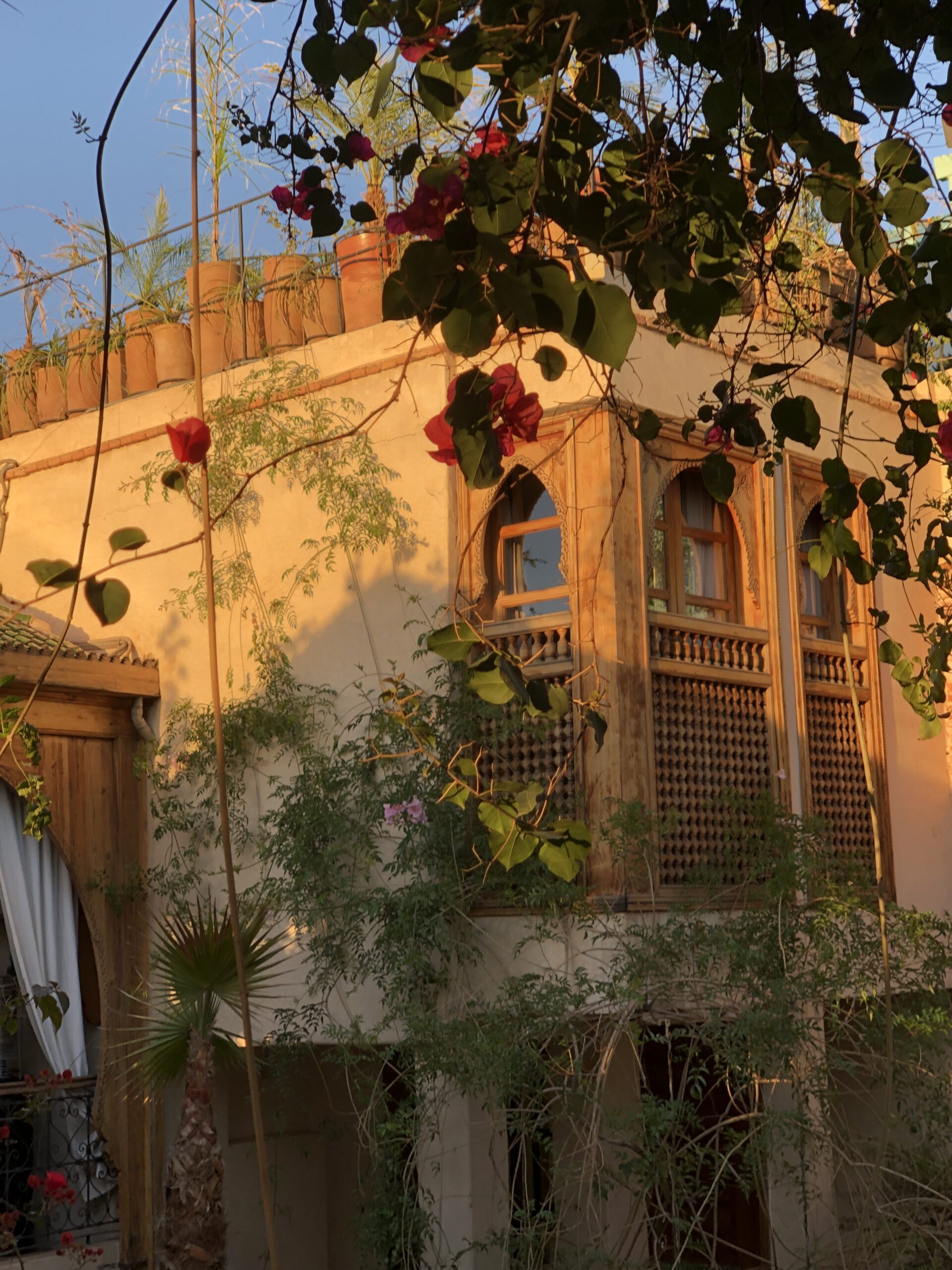The medina is the beating heart of the old city of Marrakech, with narrow winding streets that propel you past cave-like shops filled with everything a tourist might desire – silver jewellry, berbere rugs, brass lamps, the softest leather slippers and bags, and silver teapots with patterned glass cups. The all-pervasive fragrance of the medina is gasoline. It comes in wafts from the motorbikes that toot as they swerve around the bend and miss you by half an inch. And as you wend your way through the browsing crowds and tooting bikes, you might find yourself at a souq – a market square, filled with more shops, cafes and stalls. Often, the air here is redolent with woodsmoke, as braziers sizzle with brochettes of marinated meat and smoke gets in your eyes, in the most romantic way possible, of course.
The most famous souq is at Jemaa el Fnaa, the largest market square to the south of the medina, vibrant with sights, sounds and smells straight from one of Sheherazade’s, 1001 nights tales.
By day it has a tired look of broken pavings and piles of garbage, but by night, the glamour of lamplight turns it into a wonderland filled with street stalls and eateries, jugglers, stilt-walkers, monkey wranglers and snake charmers.
Walking through the market means fending off the hawkers trying to convince you to eat at their stalls. Competition for your business is fierce. They know how to charm as they accost you – ” Price like Aldi, taste like Harrods!” “We are all selling the same sh*t but of course mine is the best!”
These young men speak every language with ease. When they learned we were Australian we were met with a chorus of “G’day! Aussie, aussie, aussie! Summer Heights High! Hamish and Andy!”
More aggressive than the food hawkers are the henna-wielding women. My hand was kidnapped and held in a vice-like grip ready to be marked, but we managed to escape with a few stern words.
Further south is the kasbah, the walled citadel which contains the official royal palace and other monuments, including the Saadian tombs and the Kasbah mosque (main picture). The Saadian necropolis was renovated in the 16th century in the style of Moroccan architecture at the time. We chose a Friday to visit the kasbah, as non-muslims are not permitted in the mosques, but on Fridays the doors are open and we could glimpse the inner beauty through their grand archways.
My favourite place was the Ben Youssef Madrasa, the largest Islamic college in Morocco at its cultural height, which was commissioned by the Saadian Sultan, Abdallah Ghalib in the 16th century. Located next to the Ben Youssef mosque, scholars would live at the college and study at the mosque. What an honour it must have been to be allowed to stay at such a prestigious school, to wander those hallowed halls and discuss religion and philosophy with your peers.
Stepping into the glorious gardens at the Bahai Palace takes you to a different time, away from the dusty streets filled with motorbikes and yellow taxis, to an age where senses were soothed by jasmine and tuberose with high notes of orange blossoms. It is easy to imagine oneself reclining amongst the cool greenery in some bygone era.
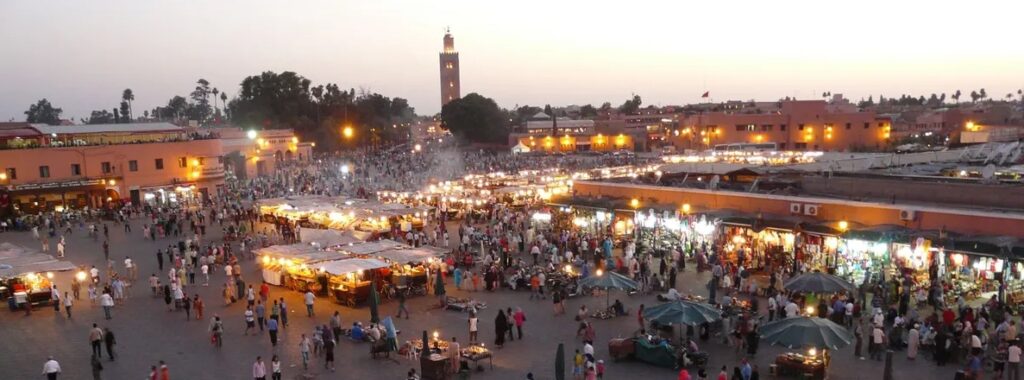
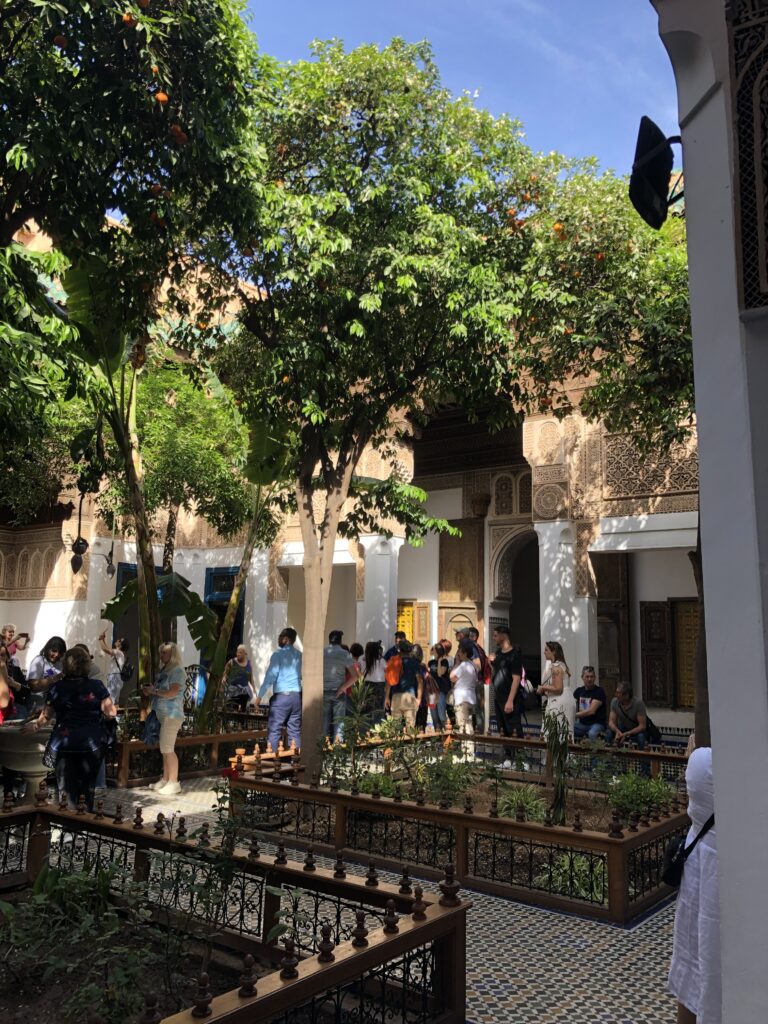
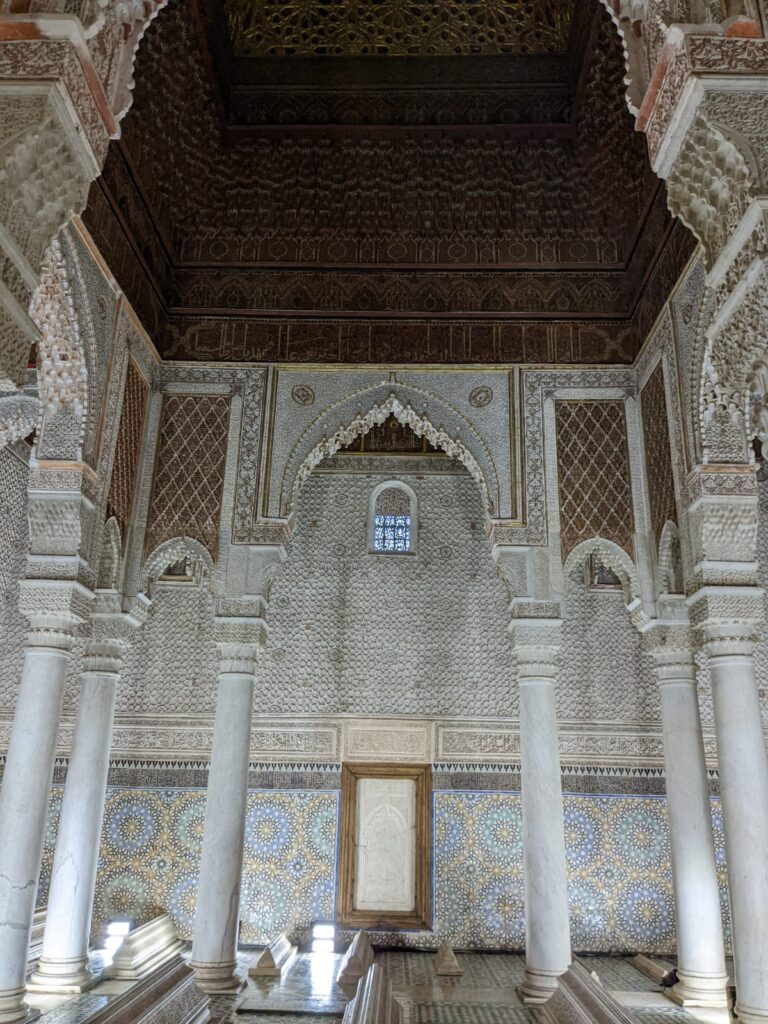
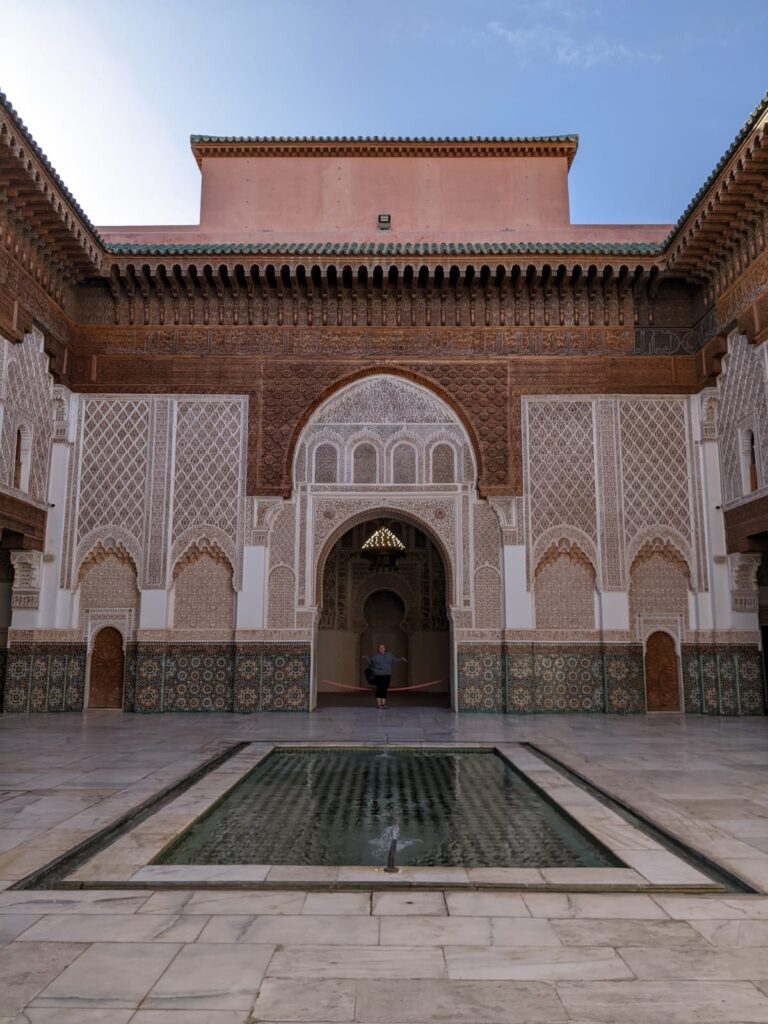
Visited 1313 Times, 1 Visit today

